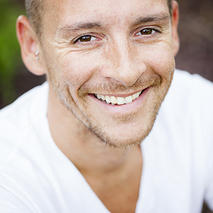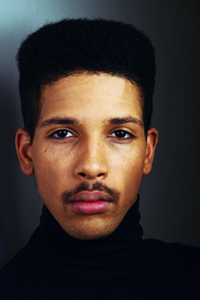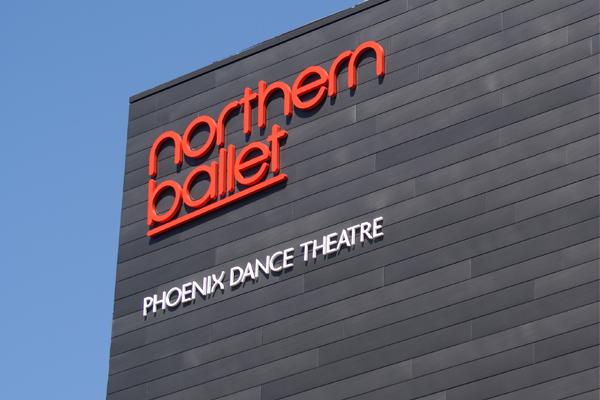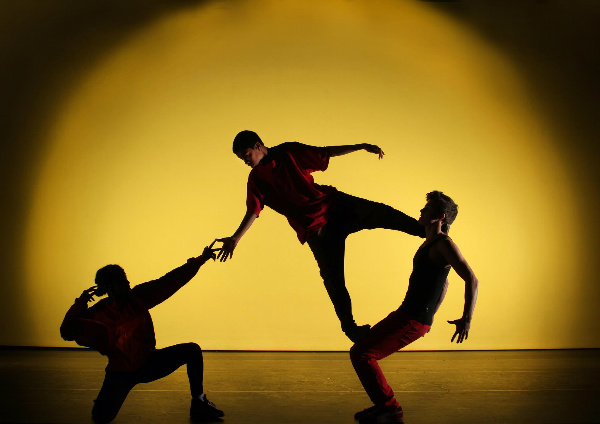 Dante Puleio is a Jersey boy. He began dancing shortly after learning how to walk, and at 2 and 3 years old had choreographed and performed for his tirelessly supportive parents; countless dances to everything from Michael Jackson to Donna Summer.
Dante Puleio is a Jersey boy. He began dancing shortly after learning how to walk, and at 2 and 3 years old had choreographed and performed for his tirelessly supportive parents; countless dances to everything from Michael Jackson to Donna Summer.
Dante began training when he was 19 years old in London at Trinity Laban. While abroad he was afforded the opportunity to dance with members of the Royal Ballet, then continued his training at the Northern School of Contemporary Dance in Leeds. In 1999 he graduated with a BFA from University of the Arts in Philadelphia where he danced with Koresh Dance Co., Brian Sander’s of JUNK and Pennsylvania Ballet Theatre.
Upon graduation Dante moved to New York and danced with Carolyn Dorfman, Gabriel Masson and the Limón Dance Company. After several years with Limón, Dante took a hiatus to explore his first love, musical theatre, and performed in Broadway shows such as The Who’s Tommy and The Wizard of Oz, as well as getting involved with commercial and industrial work with Tony Stevens and Jason Robert Brown.
Now having rejoined Limón in 2008, Dante is a principal and soloist. He spends most of the year rehearsing and touring with the company, as well as setting Limón work and holding residencies as a teacher and choreographer with dance schools, universities and companies in North, Central, and South America as well as Europe and Asia.
Have you always wanted to be on stage?
No, I did some theatre in high school but didn’t think it was a professional possibility. When I started college and I took a proper dance class that is when everything changed! So I began training and I waited 3 years to get back on stage, until I felt I was trained enough to perform
Where did you train and what was it like?
I trained at the Laban Centre (London) [as it was then known], Northern School of Contemporary Dance (Leeds) and UArts (Philadelphia). All amazing places with excellent training. It was intense and every day left me totally drained but completely fulfilled. It was an exhilarating time as I knew my life was beginning to unfold before me.
What was a typical day like?
Usually ballet and modern/contemporary every day followed by a jazz class or some sort of academic class, choreography or music. Then later on rehearsals for whatever piece I may have been involved in, and eating lots and lots of food in between. My favourite was a meatball hoagie with chocolate milk right before a Graham class… I have no idea how I did it!
What is a typical day like now?
Ballet or a Limón Class before rehearsal, then a 6 hour rehearsal day, where we run old pieces and fix the minor issues, learn new work or learn old work we don’t already know – or we have new work being set on us that we learn and rehearse. (Still lots of food, but now it’s all organic tofu and rice crackers, ugh! Meatballs are better.)
What is your favourite part of performing?
Finishing a great solo knowing you crushed it! Knowing you did all you could, all the work, all the hours paying off for a performance to be proud of. Knowing you have the audience and winning them over with your movement.
And the worst?
The moment right before you step on stage. Heart in throat, can’t breathe or stand on one leg without wobbling. And tech! Ugh, I hate technical rehearsals in a cold theatre!! That is the worst!
What are rehearsals like?
Rehearsals can be long and tedious, sometimes so specific that you forget that you are dancing, but making such minor adjustments can seem so unnecessary. But, of course, it is necessary. And some days you never stop moving, learning, running, getting notes and fixing things. And then you look at the clock and its time to go. Sometimes there can be a lot of laughter as we try new things to come up against old problems we try and fix, and sometimes we get frustrated with each other, egos and big personalities can clash and we can argue. And some days are not eventful at all, we run work, get notes, run it again and move on to the next piece. We get breaks in between, not everyone is in every piece so sometimes you’re learning a new cover if someone is getting injured or won’t be available for an upcoming performance. Or we are doing our “100’s” on the side, trying to stay warm before the next part of rehearsal, or sometimes we take little naps if we have a while before we’re needed again. We watch old dance videos, we catch up on social media when no one is looking. We debate about codified techniques and intention, we try new things we saw in a concert from the night before… we stay pretty busy.
Do you have any pre-show rituals?
No, I think superstitions are bad luck..!
Besides doing a barre, putting on make up, and trying to get out any last minute jitters, there is nothing I have to do before a show that makes me feel prepared. Maybe I always stand on one leg with my eyes closed for 30 seconds to stay centred – that may be my one thing I almost always do.
What advice would you offer to an aspiring performer?
Hmm… do everything. Take every class, go to every show, go to as many intensives as you can. I know untalented dancers that always work because they are everywhere all the time, they are hard workers and I know talented dancers that don’t work because they’re lazy and uninformed. Give yourself as many opportunities as you can, and if there is something else that interests you, do that instead. Dancing is hard and you don’t make a lot of money, so only dance if you have to. For me, once I started, there was no other choice, I couldn’t think of anything else, and still can’t 20 years later.
Having said that, [make sure you] dance now, you can always go back to school later in life for something else, you can easily be a psychiatrist at 60… but being a dancer at 60 is not quite as easy. Dance now and dance everywhere you can, and with as many people as possible. Take teaching opportunities because you discover so much about dancing when you have to tell someone else how to do it.
What’s next for you?
I’ll be 40 next year and even though my body remains injury free I’m applying for MFA programmes, and will choose a school in the coming weeks once I get offers. Because of my career, several schools are offering to pay my ride and allow me to come tuition free with a paid stipend (and in the USA that’s a big deal, because schools can cost anywhere from $50,000 to $120,000 for a 2 year programme!). I built a good resumè over the years and most schools are very excited to have someone with my background at their school, as I am excited to learn more and grow as a person, teacher, artist, dancer and choreographer. I will start school in the fall so at the end of 2 years I’ll have my MFA, and plan to move into the higher education arena as a college professor and choreographer.
 Trevor Nunn, an eminent figure of theatre, is set to direct ArtsEd students in their amateur production of William Shakespeare’s Two Gentlemen of Verona, a huge coup for both the students and Arts Educational. Nunn is an internationally acclaimed director and ArtsEd Patron; ArtsEd is the first UK drama school to work with Nunn on his first production of Two Gentlemen of Verona.
Trevor Nunn, an eminent figure of theatre, is set to direct ArtsEd students in their amateur production of William Shakespeare’s Two Gentlemen of Verona, a huge coup for both the students and Arts Educational. Nunn is an internationally acclaimed director and ArtsEd Patron; ArtsEd is the first UK drama school to work with Nunn on his first production of Two Gentlemen of Verona.
 Dante Puleio is a Jersey boy. He began dancing shortly after learning how to walk, and at 2 and 3 years old had choreographed and performed for his tirelessly supportive parents; countless dances to everything from Michael Jackson to Donna Summer.
Dante Puleio is a Jersey boy. He began dancing shortly after learning how to walk, and at 2 and 3 years old had choreographed and performed for his tirelessly supportive parents; countless dances to everything from Michael Jackson to Donna Summer. Singer Pixie Lott is set to join the Strictly Come Dancing professional dancers in the show, Puttin’ On The Ritz. The young pop star will star in the show, with music and lyrics by Irving Berlin, Cole Porter and George Gershwin, opening at the New Wimbledon Theatre.
Singer Pixie Lott is set to join the Strictly Come Dancing professional dancers in the show, Puttin’ On The Ritz. The young pop star will star in the show, with music and lyrics by Irving Berlin, Cole Porter and George Gershwin, opening at the New Wimbledon Theatre. The Guardian’s dance critic Judith Mackrell – following a Rambert performance late last year – asked if choreographers needed editors. Sometimes it is a common view, other times not so much, that dance work might benefit from an external eye cast over it to ensure it is succinct and comprehensive. This view may smart with some dance creators, however it seems necessary in order to create the best work possible for the future.
The Guardian’s dance critic Judith Mackrell – following a Rambert performance late last year – asked if choreographers needed editors. Sometimes it is a common view, other times not so much, that dance work might benefit from an external eye cast over it to ensure it is succinct and comprehensive. This view may smart with some dance creators, however it seems necessary in order to create the best work possible for the future. Stephen Quildan was born in London and trained at the BRIT School, later Rambert School of Ballet and Contemporary Dance. He has performed with English National Ballet (Romeo & Juliet) at the Royal Albert Hall and Peter Schaufuss Balletten (Nøddebo Præstegård), Danish tour. Whilst at Rambert he performed in August Bournonville’s ‘Napoli’ and an excerpt from Peter Darrell’s ‘Nutcracker’. Stephen has also worked with contemporary choreographers such as Mark Baldwin (Rite of Spring) and Darren Ellis. Stephen also has performed his own work in Poland and the UK. He soon will be dancing lead roles in Pineapple Poll and Carnival of the Animals for The Chelmsford Ballet Company.
Stephen Quildan was born in London and trained at the BRIT School, later Rambert School of Ballet and Contemporary Dance. He has performed with English National Ballet (Romeo & Juliet) at the Royal Albert Hall and Peter Schaufuss Balletten (Nøddebo Præstegård), Danish tour. Whilst at Rambert he performed in August Bournonville’s ‘Napoli’ and an excerpt from Peter Darrell’s ‘Nutcracker’. Stephen has also worked with contemporary choreographers such as Mark Baldwin (Rite of Spring) and Darren Ellis. Stephen also has performed his own work in Poland and the UK. He soon will be dancing lead roles in Pineapple Poll and Carnival of the Animals for The Chelmsford Ballet Company. Northern Ballet, one of the five major companies in the UK, is returning to London’s Sadler’s Wells with its smash hit, sell-out production of The Great Gatsby from 24–28 March. Based on the novel by F. Scott Fitzgerald which celebrates its 90th anniversary this year – as well as referencing the box office hit film of the same name – Northern Ballet brings both the glamour and seduction of the roaring twenties to the stage.
Northern Ballet, one of the five major companies in the UK, is returning to London’s Sadler’s Wells with its smash hit, sell-out production of The Great Gatsby from 24–28 March. Based on the novel by F. Scott Fitzgerald which celebrates its 90th anniversary this year – as well as referencing the box office hit film of the same name – Northern Ballet brings both the glamour and seduction of the roaring twenties to the stage. The iconic Tate Modern is to become a museum of dance for 48 hours as 75 performers take over the gallery spaces for displays and workshops, and the Turbine Hall is transformed into a nightclub, planned by French choreographer Boris Charmatz. The May project will feature performances ranging from ballet to krump as well as works by the renowned Charmatz himself.
The iconic Tate Modern is to become a museum of dance for 48 hours as 75 performers take over the gallery spaces for displays and workshops, and the Turbine Hall is transformed into a nightclub, planned by French choreographer Boris Charmatz. The May project will feature performances ranging from ballet to krump as well as works by the renowned Charmatz himself. A special exhibition celebrating 40 years of theatre on Broadway and the West End is to run in both New York and London. Provisionally called Curtain Up!, the exhibition is timed to coincide with the 40th anniversary of the Olivier Awards in 2016, and will showcase past winners of the awards in the ultimate celebration of theatre and the arts in the two cities.
A special exhibition celebrating 40 years of theatre on Broadway and the West End is to run in both New York and London. Provisionally called Curtain Up!, the exhibition is timed to coincide with the 40th anniversary of the Olivier Awards in 2016, and will showcase past winners of the awards in the ultimate celebration of theatre and the arts in the two cities. The National Youth Dance Company will present a world premiere at its Sadler’s Wells home on 10 April, choreographed by Sidi Larbi Cherkaoui, this year’s Guest Artistic Director. NYDC will return for its third year with a new intake of 30 talented dancers who join eight returners from the previous cohorts. Cherkaoui is one of the most prolific choreographers working today: he is one of Europe’s most exciting choreographers.
The National Youth Dance Company will present a world premiere at its Sadler’s Wells home on 10 April, choreographed by Sidi Larbi Cherkaoui, this year’s Guest Artistic Director. NYDC will return for its third year with a new intake of 30 talented dancers who join eight returners from the previous cohorts. Cherkaoui is one of the most prolific choreographers working today: he is one of Europe’s most exciting choreographers. Dancing barefoot for modern or contemporary dance doesn’t come without its pitfalls – ballet dancers certainly suffer but that’s not to say contemporary dancers don’t too! Many dancers opt for socks, or their costume may demand them to be worn, however to fully feel the floor beneath you – and to move in response to that – requires barefoot dance. Despite this, dancers may still encounter problems along the way.
Dancing barefoot for modern or contemporary dance doesn’t come without its pitfalls – ballet dancers certainly suffer but that’s not to say contemporary dancers don’t too! Many dancers opt for socks, or their costume may demand them to be worn, however to fully feel the floor beneath you – and to move in response to that – requires barefoot dance. Despite this, dancers may still encounter problems along the way.